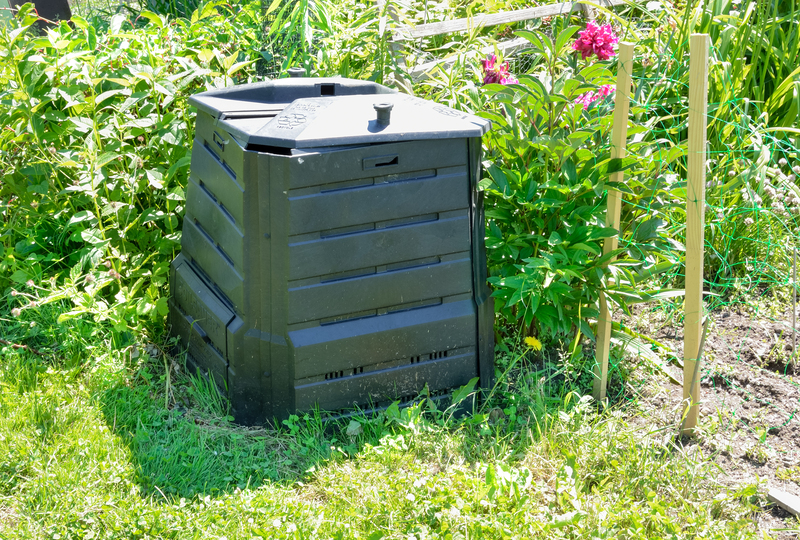Best Practices for Safely Disposing PPE Waste
The unprecedented surge in the adoption of Personal Protective Equipment (PPE) like masks, gloves, face shields, and gowns has made safe PPE waste disposal more crucial than ever. PPE waste is not only a byproduct of healthcare but also widely produced by individuals in community, commercial, and industrial settings. Improper handling poses health and environmental risks. This comprehensive guide explores best practices for disposing PPE waste, ensuring safety, sustainability, and compliance with regulations.
Understanding PPE Waste: What Is It and Why Proper Disposal Matters
Personal Protective Equipment (PPE) waste includes any equipment designed to protect individuals from infectious agents, hazardous materials, or particulate matter, once it has been used and is ready to be discarded. The rising use of single-use PPE during pandemics like COVID-19 has generated an enormous amount of waste, intensifying the problems of pollution and pathogen transmission.
- Environmental Impact: Many PPE items, especially disposable masks and gloves, are made from plastics that take decades to decompose.
- Health Risks: Improperly disposed PPE can spread diseases to sanitation workers, the public, and wildlife.
- Legal Responsibilities: Businesses and healthcare providers are legally obligated to follow hazardous waste management procedures. Non-compliance leads to fines and potential health crises.
Differentiating PPE Waste Streams
PPE waste falls into several streams. Proper identification is essential for safe and efficient disposal.
- Medical/Clinical PPE Waste: Generated in healthcare settings; potentially contaminated with bodily fluids or infectious pathogens.
- Community PPE Waste: Includes masks and gloves used by the public; generally less contaminated but still poses risks.
- Industrial PPE Waste: May be contaminated with chemicals or hazardous substances, requiring specific handling.

General Best Practices for Disposing PPE Waste
Implementing standardized procedures ensures safe PPE waste disposal for everyone, from individuals to organizations. Adhering to these recommended techniques limits exposure, prevents contamination, and supports environmental sustainability.
Step 1: Segregate PPE Waste at the Source
- Color-Coded Bins: Use dedicated, clearly labeled bins for all types of PPE waste. Common color codes: yellow or red bags for infectious waste; black or blue for general.
- Location of Bins: Place waste bins close to PPE doffing areas (points of removal) in clinics, entry/exit points in public buildings, and at handwashing stations.
- Public Education: Use signs and infographics to instruct users on correct disposal. Visual guides can drastically reduce contamination.
Step 2: Use Appropriate Containers
- Leak-Proof Bags: PPE waste bags should be strong, puncture-resistant, and properly sealed to prevent leaks and spills.
- Hands-Free Lids: Foot-pedal bins reduce hand contact and minimize the risk of cross-contamination.
- Capacity Monitoring: Do not overfill bags--close and replace containers when they reach two-thirds capacity.
Step 3: Secure Storage Until Collection
- Designated Waste Storage Area: Store collected PPE waste in a secure, ventilated spot, away from public and staff access.
- Regular Waste Removal: Arrange for prompt daily removal. Prolonged storage increases contamination risk and odor.
Step 4: Safe Handling Protocols
- Always Wear Gloves when handling PPE waste. Dispose of or sanitize gloves after each session.
- Avoid Compressing Waste: Do not attempt to compact or press down bags once filled to reduce risk of punctures.
- Wash Hands Immediately after handling waste, even if gloves were used.
Specific Disposal Methods for Different PPE Items
1. Masks, Respirators, and Face Shields
- Single-Use Masks: Place directly into designated waste bins. Do not attempt to recycle unless a certified recycling scheme is in operation.
- Reusable Masks: Wash thoroughly with detergent at high temperatures before reuse. If disposing, treat as general PPE waste.
- Face Shields: Clean with a disinfectant if reusable. For single-use face shields, follow local hazardous plastic waste protocols.
2. Gloves
- Never recycle used gloves; high contamination risk. Properly discard in PPE waste bins.
- Peel off gloves turning them inside out, and minimize touching the outside surface.
3. Gowns, Aprons, and Protective Clothing
- If reusable, follow laundering protocols at the highest recommended temperature with disinfecting agents.
- Disposable gowns and aprons should be bagged immediately and treated as infectious or hazardous waste.
4. Goggles and Other Reuseable PPE
- Dispose only if broken; otherwise, clean and disinfect thoroughly between uses.
- Damaged items that cannot be disinfected should be treated as hazardous plastic waste.
Regulatory and Legal Compliance in PPE Waste Disposal
Regulatory frameworks govern PPE waste management in hospitals, clinics, and workplaces. Failure to comply can compromise safety and result in legal penalties.
- OSHA (Occupational Safety and Health Administration) stipulates PPE disposal methods and worker safety protocols in the U.S.
- WHO Guidelines offer international standards on infectious healthcare waste--including COVID-19 related PPE.
- EPA (Environmental Protection Agency) manages hazardous waste classification and disposal for environmental safety.
- Local and Regional Laws: Numerous municipalities now issue their own requirements for safe PPE disposal.
Documentation and Training
- Keep written protocols for PPE waste segregation, handling, and disposal.
- Regularly train all personnel on updates in guidelines.
- Maintain manifests (records) where required for hazardous PPE waste transfer.
Environmental-Friendly Approaches to PPE Waste
Given the lasting impact of plastic-based PPE on the planet, it's essential to explore greener alternatives that don't compromise health.
Reduce, Reuse, and Replace
- Reduce Single-Use PPE: Where appropriate, opt for reusable items, especially outside healthcare or industrial settings.
- Innovative Materials: Consider biodegradable or compostable PPE alternatives; several manufacturers are now offering eco-friendly masks and gloves.
- Donate Unused PPE: Redirect surplus or unopened stock to organizations in need rather than discarding.
PPE Waste Recycling Initiatives
- Specialized Recycling Programs: Some companies collect and recycle used PPE (e.g., TerraCycle). Only deposit PPE in general recycling if certified as safe and instructed by local programs.
- Disinfection Before Recycling: Some schemes require heat or chemical treatment to neutralize pathogens before recycling PPE.
- Community Collection Areas: Set up central collection points for non-infectious PPE waste contribution to recycling projects.
Best Practices for Minimizing Environmental Impact
- Avoid Littering: Never leave used PPE in public spaces; such actions harm wildlife and spread pathogens.
- Participate in Community Clean-Ups: Help remove improperly disposed PPE from parks, waterways, and forests.
- Advocate for Policy: Encourage local governments to create PPE waste recycling and safe disposal frameworks.
Protecting Sanitation Workers and Waste Handlers
Workers who collect, transport, and process PPE waste are often at the frontlines of exposure. Protecting their health is essential in any PPE waste management plan.
Training and Education
- Provide regular instruction on safe PPE waste handling procedures.
- Emphasize the use of sturdy gloves, face coverings, and protective clothing during waste handling and transport.
Vaccination and Health Monitoring
- Facilitate access to relevant vaccinations and prompt medical evaluations if a worker is exposed to infectious waste.
- Promote mental health support, as dealing with hazardous PPE can also impact psychological well-being.
Tools and Technology
- Employ mechanical handling (e.g., trolleys, automated lifters) to reduce direct physical contact.
- Develop reporting systems for exposure or accidents for quick remediation.
Frequently Asked Questions About PPE Waste Disposal
- Can I recycle my used face mask at home?
Generally, no. Most curbside recycling does not accept used PPE for safety reasons. Use designated PPE waste collection or specialized recycling schemes. - Is burning PPE waste a good solution?
Incineration is common for clinical PPE waste but should only occur at certified facilities to control emissions and prevent pollution. - How long can viruses survive on discarded PPE?
Studies show some viruses may persist on certain PPE surfaces for hours up to several days, especially in humid, unventilated conditions. - What should I do with PPE used in caring for a sick person at home?
Double-bag all used PPE, keep sealed for at least 72 hours before placing in general waste, and wash hands thoroughly after handling.

The Future of PPE Waste Management
As the demand for PPE safe disposal continues, innovation in materials, recycling, and policies will shape waste management in coming years. Advances such as biodegradable PPE, improved recycling systems, and public education campaigns offer hope against the environmental toll of PPE waste. However, responsibility begins at the individual and organizational level--following best practices in PPE waste disposal is the foundation for a healthier, cleaner world.
Conclusion: Making PPE Waste Disposal Safe and Sustainable
The safe and responsible management of PPE waste protects both people and the planet. Key steps include segregating, containing, labeling, and safely removing PPE waste from the environment. Strict adherence to legal guidelines and regular training of handlers are crucial elements. Families, businesses, and government bodies all play critical roles in upholding best practices for PPE disposal. By collectively embracing these measures, we can mitigate risks, support frontline workers, and contribute to a healthy, sustainable future.
Remember: Every piece of PPE, when properly disposed of, prevents contamination, lowers environmental damage, and demonstrates our commitment to public health and ecological stewardship.
